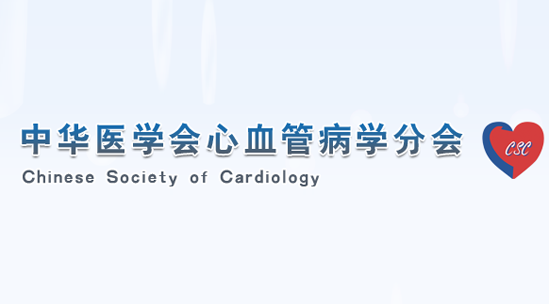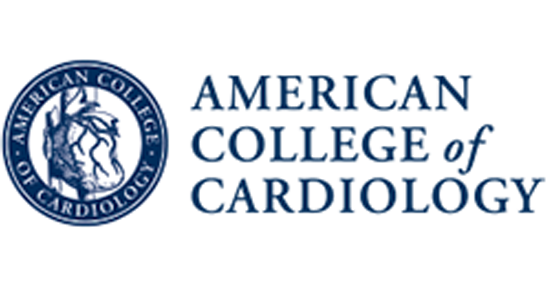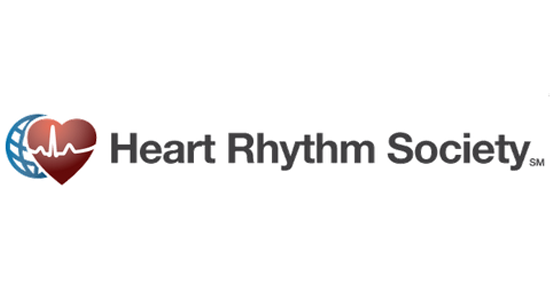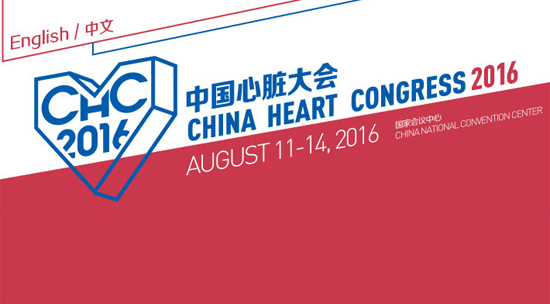HeartRhythm主编—陈鹏生教授语音速递(七月刊 英文版)


Peng-Sheng Chen
Hello, this is Dr. Peng-Sheng Chen, the Editor-in-Chief of Heart Rhythm. This is a summary of the July 2022 issue of the journal.
The first article is “Patterns of care for first-detected atrial fibrillation: Insights from the Get With The Guidelines® - Atrial Fibrillation registry”.Of the 86,759 registry patients with AF, 17.8% (15,473) had first-detected AF. Overall, 51.3% (5999) of patients were treated with rate control and 48.7% (5686) with rhythm control at admission. Patients with planned rhythm control had a shorter length of stay and were more likely to be discharged home than to a facility. A higher percentage of patients with planned rhythm control were discharged on anticoagulation than those with planned rate control despite a higher underlying stroke risk in the rate control group. The authors conclude that less than half of the patients with first-detected AF receive rhythm control at admission. Given recent trial results, further studies should assess the long-term impact of rhythm control on patients' symptoms and quality of life, cardiovascular morbidity, and mortality.
The next paper is “Exercise Training in Heart Failure With Reduced Ejection Fraction and Permanent Atrial Fibrillation: A Randomized Clinical Trial”. Twenty-six patients (mean age 58±1 years) were randomized to exercise training or no training. At baseline, no differences between the groups were found. Exercise improved peak oxygen consumption, slope of ventilation per minute/carbon dioxide production, and quality of life. Left atrial dimension decreased. The authors conclude that exercise training can improve exercise capacity, quality of life, and cardiac function in patients with HF with reduced ejection fraction and permanent atrial fibrillation.
Up next is “How to Use Bipolar and Unipolar Electrograms for Selecting Successful Ablation Sites of Ventricular Premature Contractions”. This cohort consisted of 66 patients with VPCs presenting for ablation in a bigeminy, trigeminy, or quadrigeminy pattern. In endocardial VPCs, the first rapid bipolar deflection corresponded with unipolar -dV/dTmax, occurring 20.5 ms and 16.0 ms, respectively, before the QRS onset. In successfully ablated intramural VPCs, the first rapid bipolar deflection preceded the QRS onset by 14.0 ms and coincided with the first rapid unipolar deflection. The authors conclude that mapping of VPCs should be guided by the first rapid bipolar deflection that corresponds to a similarly early unipolar deflection but not with -dV/dTmax.
Up next is “Catheter Ablation Improves Outcomes and Quality of Life in Japanese Patients with Early-Stage Atrial Fibrillation: A Retrospective Cohort Study”. The Keio Interhospital Cardiovascular Studies-Atrial Fibrillation registered 3318 patients with AF newly diagnosed at or referred to participating hospitals. During a median follow-up period of 730 days, patients who underwent catheter ablation had a lower risk of primary outcomes, with a significantly lower risk of heart failure hospitalization and improved Atrial Fibrillation Effect on QualiΤy-of-Life scores, than did those who received medical therapy. The authors conclude that in patients with propensity score-matched, early-stage, real-world AF, catheter ablation was associated with a lower risk of adverse clinical events and improved quality of life as compared with medical therapy.
Up next is “Termination of Macroreentrant Atrial Arrhythmias by Pacing Stimuli without Global Propagation”. Electrical stimulation during ventricular tachycardia resulting in tachycardia termination without global propagation (TWGP) is a well-recognized phenomenon. However, there is a paucity of literature showing a similar phenomenon in atrial arrhythmias.The authors studied 34 patients in whom stimulation during atrial tachycardia/flutter resulted in TWGP. Of the 34 patients, 12 (29%) had cavotricuspid isthmus (CTI)-dependent atrial flutter and 22 (71%) had other atrial arrhythmias during which TWGP was seen. The authors found that the termination of macroreentrant atrial arrhythmias by pacing stimuli without global propagation identifies a narrow diastolic isthmus at which catheter ablation is highly effective.
The next one is “Predictors of Perforation During Lead Extraction; Results of the Canadian Lead ExtrAction Risk (CLEAR) Study”. The authors studied a total of 2325 consecutive patients underwent extraction of 4527 leads. Perforation rate was 2.7% (63/2325) and 30-day mortality was 1.6% (38/2325), with mortality of 0.4% due to perforation (10/2325). The authors found that the risk factors associated with perforation in lead extraction include no history of cardiac surgery, female sex, preserved left ventricular ejection fraction, lead age >8 years, ≥2 leads extracted, and diabetes.
Coming up is “Successful Avoidance of Superior Vena Cava Injury During Transvenous Lead Extraction Utilizing Tandem Femoral-Superior Approach”. The authors included consecutive 131 patients undergoing transvenous extraction of at least 1 pacemaker or defibrillator lead with implant duration ≥1 year in which a tandem femoral-superior technique was used as the initial extraction strategy. They found that a tandem femoral-superior approach to lead extraction effectively eliminated superior vena cava injury. This is a safe and effective technique for transvenous lead extraction.
The next one is “Age-related differences and associated mid-term outcomes of subcutaneous implantable cardioverter defibrillators: a propensity-matched analysis from a multicenter European registry”. Two propensity-matched cohorts of teenagers + young adults (≤30 years old) and adults (>30 years old) were retrieved from the ELISIR Registry. Teenagers + young adults represented 11.0% of the entire cohort. At univariate analysis, young age was not associated with increased rates of inappropriate shocks. At multivariate analysis, use of the SMART Pass algorithm was associated with a strong reduction in inappropriate shocks, whereas arrhythmogenic right ventricular cardiomyopathy (ARVC) was associated with higher rates of inappropriate shocks. The authors conclude that in a large multicenter registry of propensity-matched patients, use of the S-ICD in teenagers/young adults was safe and effective. The rates of inappropriate shocks and complications between cohorts were not significantly different. The only predictor of increased inappropriate shocks was a diagnosis of ARVC.
Up next is “Atrioventricular junction ablation in patients with conduction system pacing leads: A comparison of His-bundle vs left bundle branch area pacing leads”. One hundred five AVJ ablation procedures were performed in 98 patients. Roughly half of the patients received His-bundle pacing and the other half LBB are pacing. The mean procedural time and mean fluoroscopy time were significantly longer in the HBP vs LBBAP group. The authors found that AVJ ablation in the presence of an LBBAP lead is associated with a higher success rate and fewer acute and chronic lead-related complications. CSP with either HBP or LBBAP preserves left ventricular systolic function in patients with refractory atrial fibrillation post AVJ ablation.
The next one is “Prognostic impact of permanent pacemaker implantation following transcatheter aortic valve replacement”. A total of 659 patients were included in the study.A total of 104 patients (15.8%) needed PPI following TAVR. The authors found that new PPI following TAVR was not associated with overall survival or cardiovascular survival difference at 2 years. However, receiving a new PPI in the setting of low LVEF adversely impacts mid-term cardiovascular survival.
Up next is “Sex-related differences in the prognosis of patients with cardiac sarcoidosis treated with cardiac resynchronization therapy”. This multicenter cardiac sarcoidosis survey included 430 patients divided into those treated with primary CRT or upgraded CRT from the pacemaker (CRT group; n = 73) and others (control group; n = 357). The authors found that in cardiac sarcoidosis patients with CRT, HF death-free survival was similar between sexes. However, females exhibited better ventricular arrhythmia events (sudden death, appropriate device therapy), and cardiac adverse events-free survival than males.
The next paper is “Skin sympathetic nerve activity in patients with chronic orthostatic intolerance”. The authors used an ECG monitor with a built-in triaxial accelerometer to simultaneously record skin sympathetic nerve activity (SKNA) and posture in ambulatory participants. They then compared the symptoms with SKNA bursts or tachycardia. They found that in participants with chronic orthostatic intolerance, the SKNA bursts associated with symptoms had higher burst frequencies, longer burst durations, and larger mean burst areas than did bursts during asymptomatic periods. The authors conclude that SKNA bursts are a highly specific, albeit insensitive, symptomatic biomarker for chronic orthostatic intolerance.
Up next is “Incidence of Morbidity and Mortality in a Cohort of Congenital Complete Heart Block Patients Followed Over 40 Years”. One-hundred fourteen subjects were included. Eighty-eight (77%) underwent pacemaker implantation. Twenty-six subjects (23%) reached the primary outcome; including 7 (6%) died and 14 (12%) were diagnosed with heart failure and/or cardiomyopathy. Median time from diagnosis to primary outcome was 3.1 years (IQR 0.0-10.8 years). Fetal diagnosis had a higher associated hazard of heart failure and/or cardiomyopathy. The authors conclude that in 114 subjects with congenital complete heart block, 23% reached the composite outcome of cardiac morbidity and mortality, with no significant association between age at diagnosis, fetal diagnosis, and maternal antibody status with composite cardiac morbidity and mortality.
Coming up is “Transvenous Laser Lead Extraction in Patients with Congenital Complete Heart Block.” Overall, 16 patients were included. The mean age at transvenous device implant was 13.8 ± 4.7 years. Mean patient age at transvenous lead extraction was 34 years with a mean duration of lead implant of 19.2 years. A total of 38 leads were removed, with complete procedural success achieved in 14 of 16 (87.5%). In conclusion, patients with CCHB represent a unique cohort highlighted by several generator changes, lead revisions, and abandoned leads at a young age, along with a long duration of lead dwelling time and a high prevalence of lead malfunction requiring TLE. There may be a high risk of major complications during TLE.
The next paper is “Reduced Motion External Defibrillation: Reduced Subject Motion with Equivalent Defibrillation Efficiency validated in Swine”. A reduced motion external defibrillator (RMD) was constructed by integrating a commercial defibrillator with a Tetanizing-waveform generator. A long-duration, low-amplitude, tetanizing waveform slowly stimulated the chest musculature before the biphasic pulse, reducing muscle contraction during the shock in swine. Two forward-limb acceleration peaks occurred during both the tetanizing waveform and biphasic pulse, indicating rapid and slower nociceptic (pain sensation) nerve fiber activation.Relative to conventional defibrillations, RMD defibrillations maintain rhythm restoration efficiency with drastically reduced subject motion. These findings suggest the RMD may reduce the pain during defibrillation.
The above original articles are followed by 3 contemporary reviews. The first one is “Leadless Left Ventricular Endocardial Pacing for Cardiac Resynchronization Therapy: A Systematic Review and Meta-Analysis”. The authors conclude that the efficacy of leadless LV endocardial pacing for CRT supports its use as a second-line therapy in patients in whom standard CRT is not possible or has been ineffective. Improvements in safety profile will facilitate widespread uptake in the treatment of these patients.
A second review article is titled “How to Perform Extrathoracic Venous Access for Cardiac Implantable Electronic Devices Placement: Detailed Description of Techniques”. This review provides a detailed description of the anatomy, technical considerations, and relative advantages and disadvantages of each of these extrathoracic venous access sites.
A third review is titled “Remote and Wearable ECG Devices with Diagnostic Abilities in Adults: A State-of-the-Science Scoping Review”. The authors summarized technical logistics of signal quality and device reliability, dimensional and functional features, and diagnostic value.
The review articles are followed by 5 research letters. The titles are as follows:
1. Tricuspid regurgitation outcomes in left bundle branch area pacing and comparison with right ventricular septal pacing.
2. Adverse Events Associated with the AtriClip Device for Left Atrial Appendage Occlusion: A Food and Drug Administration MAUDE database study.
3. Longevity of model-3501 subcutaneous implantable defibrillator leads in clinical practice.
4. Urgent Catheter Ablation for Treatment Refractory Symptomatic Atrial Fibrillation: Healthcare Utilization and Outcomes.
5. Impact of Radiation on Inpatient Outcomes in Patients with Breast Cancer and Atrial Fibrillation: A Nation-Wide Analysis.
The journal also online published an Expert Consensus Statement on the state of genetic testing for cardiac diseases.
I hope you enjoyed this podcast. For Heart Rhythm, I’m the Editor-In-Chief, Dr. Peng-Sheng Chen.











